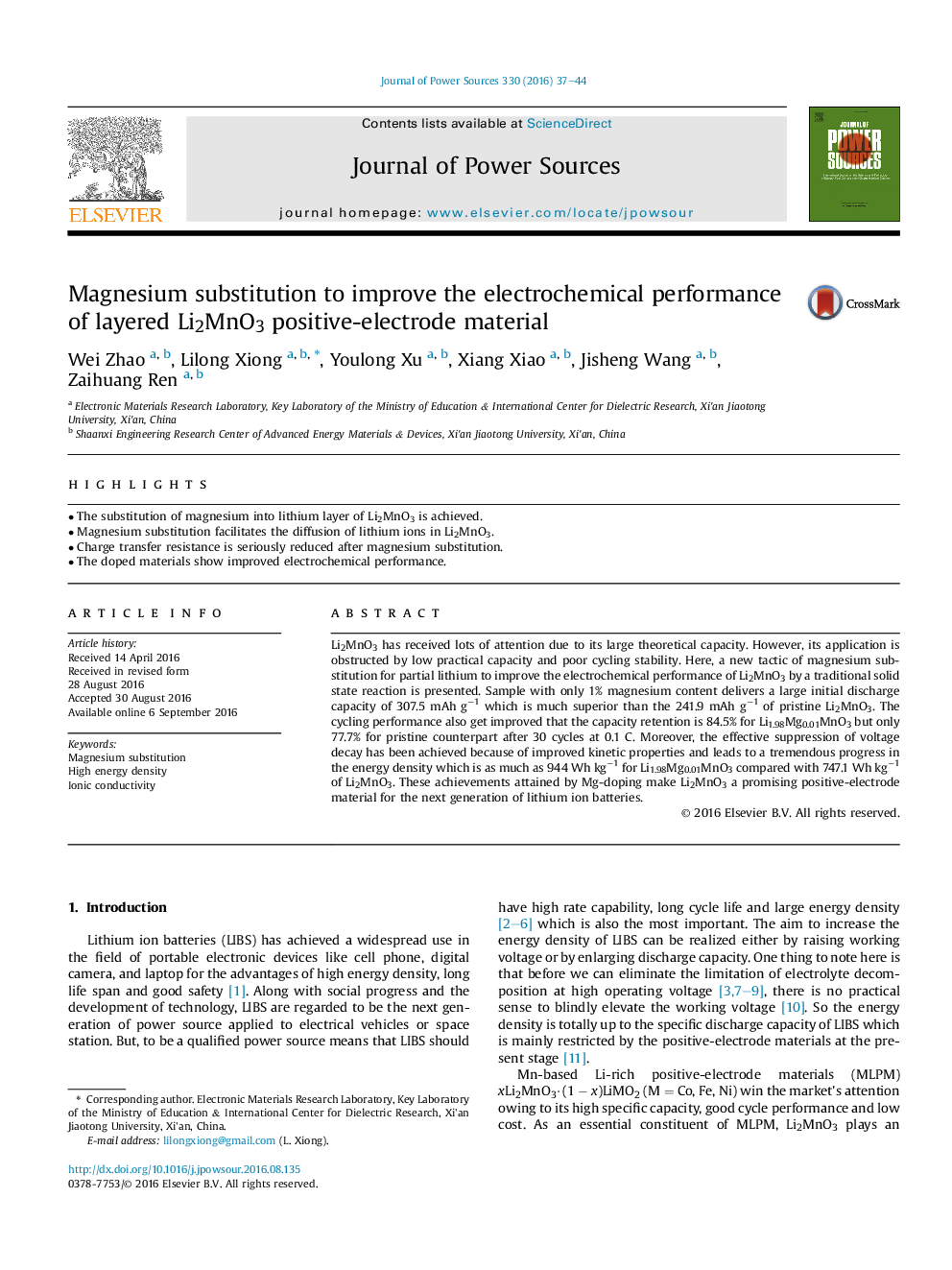| Article ID | Journal | Published Year | Pages | File Type |
|---|---|---|---|---|
| 5150238 | Journal of Power Sources | 2016 | 8 Pages |
Abstract
Li2MnO3 has received lots of attention due to its large theoretical capacity. However, its application is obstructed by low practical capacity and poor cycling stability. Here, a new tactic of magnesium substitution for partial lithium to improve the electrochemical performance of Li2MnO3 by a traditional solid state reaction is presented. Sample with only 1% magnesium content delivers a large initial discharge capacity of 307.5Â mAh gâ1 which is much superior than the 241.9Â mAh gâ1 of pristine Li2MnO3. The cycling performance also get improved that the capacity retention is 84.5% for Li1.98Mg0.01MnO3 but only 77.7% for pristine counterpart after 30 cycles at 0.1Â C. Moreover, the effective suppression of voltage decay has been achieved because of improved kinetic properties and leads to a tremendous progress in the energy density which is as much as 944Â Wh kgâ1 for Li1.98Mg0.01MnO3 compared with 747.1Â Wh kgâ1 of Li2MnO3. These achievements attained by Mg-doping make Li2MnO3 a promising positive-electrode material for the next generation of lithium ion batteries.
Related Topics
Physical Sciences and Engineering
Chemistry
Electrochemistry
Authors
Wei Zhao, Lilong Xiong, Youlong Xu, Xiang Xiao, Jisheng Wang, Zaihuang Ren,
